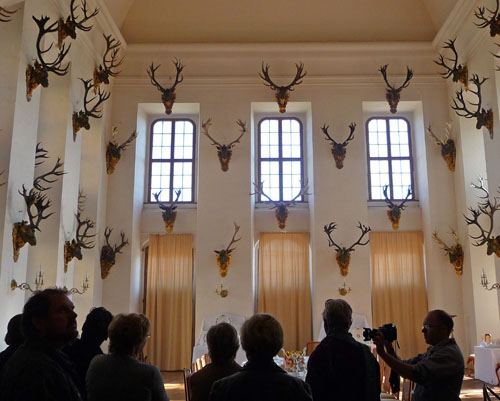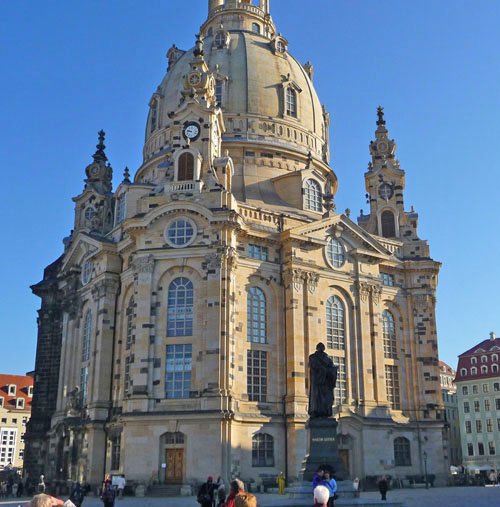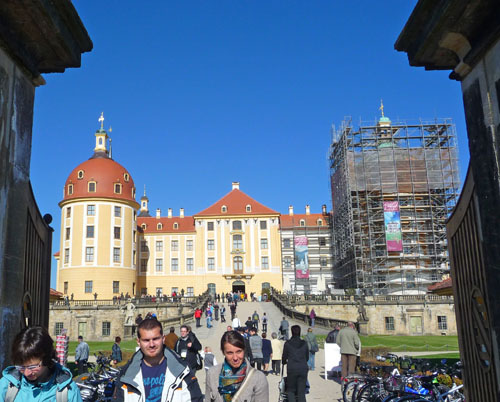It was good to be Augustus the Strong. For one thing, he had lots of jobs, like King of Poland, Grand Duke of Lithuania and Elector of the State of Saxony (which meant, besides running that central European state, he could vote for the emperor of the Holy Roman Empire). And yes, the 18th century monarch had incredible strength... for instance, he could break horseshoes with his bare hands.

Augustus' court was in the city of Dresden, his home town and the capital of Saxony for the last thousand or so years. Saxony has been a German state, off and on, since 1815.
On a tour of the city, you can see why Augustus was known as a big spender.
You can't miss his ornate, baroque palaces and government buildings. They're all over the place, such as the spectacular Zwinger Palace complex of gardens, courtyards, pavilions and galleries.
Augustus' sprawling palaces were rebuilt along with most of Dresden after the city was virtually wiped out by Allied bombers during World War II. Major reconstruction projects included the landmark Protestant church Die Frauenkirche (Church of Our Lady), which was built in the 1700s and reduced to rubble in the bombing. It was rebuilt stone by stone over 11 years at a cost of $215 million, mostly financed by donations from around the world.

After the end of the war, the city was occupied by the Russians until they were booted out in the "Peaceful Revolution" of 1989. Tour guide Sylvia Hano says there's an easy way to spot buildings around town that were constructed by the Russians: "If it's ugly, they built it."
Another local landmark on the tour is a 335-foot-long tile mural called "The Procession of the Princes" (portraying all the rulers of Saxony from the 12th to the 19th centuries), said to be the longest tile mural in the world. From there, the tour crosses the Elbe River to visit some of Augustus' hideaways out in the lush meadows of the Elbe Valley.
One was Schloss Moritzburg, Augustus' hunting castle. Built in the 16th century, it's located on an island right off the travel posters. You half expect to see Cinderella sprinkling moonbeams from a magic wand as she flitters around the castle's red-roofed towers. No wonder it's known as "the Fairy Tale Castle."
Augustus died of a gangrene infection in 1733 at the age of 63. Besides his legacy of eye-popping baroque palaces and fine art collections, he is known for spearheading programs that unlocked the Asian secrets of manufacturing fine porcelain, and for making the term "Dresden china" synonymous with a world-famous product.

Getting there: Several airlines offer connecting flights to Dresden from major European hubs such as London, Zurich, Frankfurt and Munich.
Staying there: Some 50 tourist-class hotels are available around Dresden. Among popular properties is the 326-room Maritim, located on the Elbe River next to the city's convention center.
More info: Visit the Dresden Marketing Board at www.marketing.dresden.de, the Tourism Marketing Company of Saxony at www.visitsaxony.com and the German National Tourist Office at www.cometogermany.com.
Photo credit: All three images by Bob Schulman.